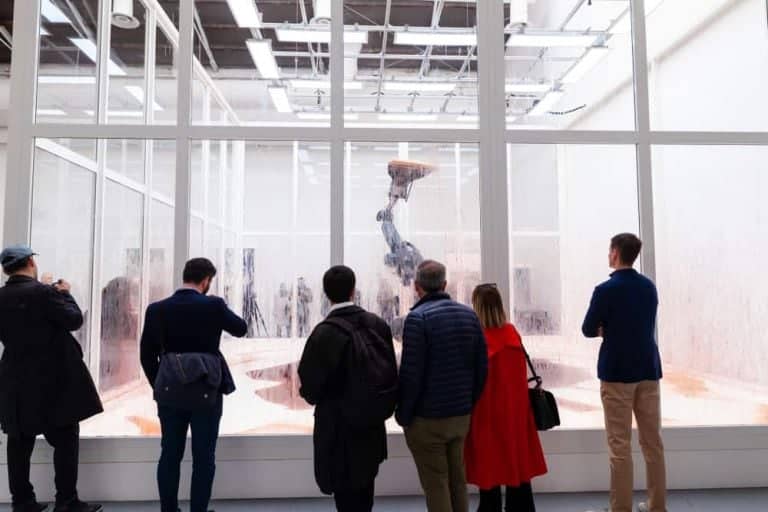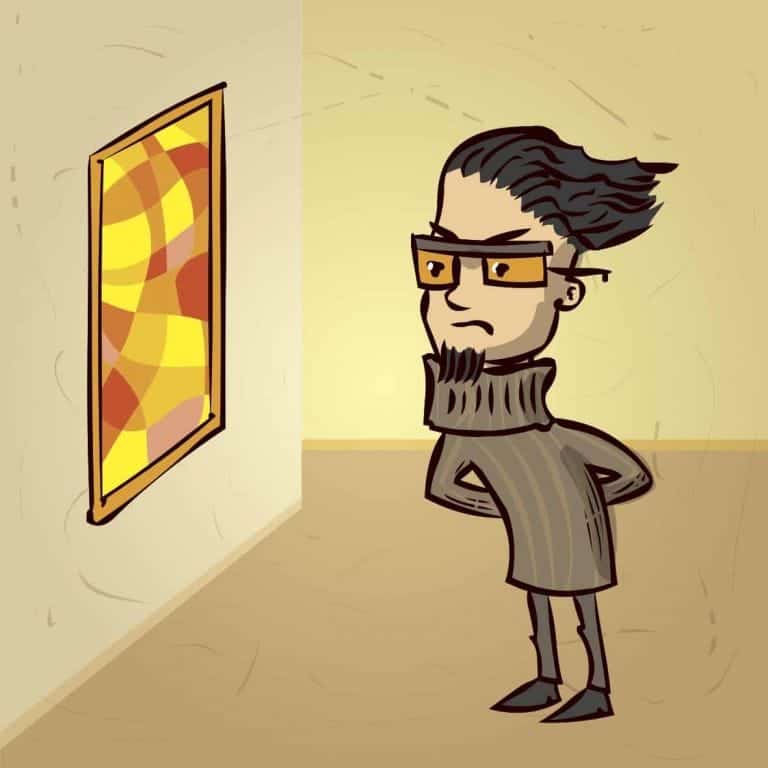It’s 10 am and I’m driving hell-for-leather down the expressway to get to Gillman Barracks. I’ve taken on a gallery sitting job and the exhibition has to open exactly on time.
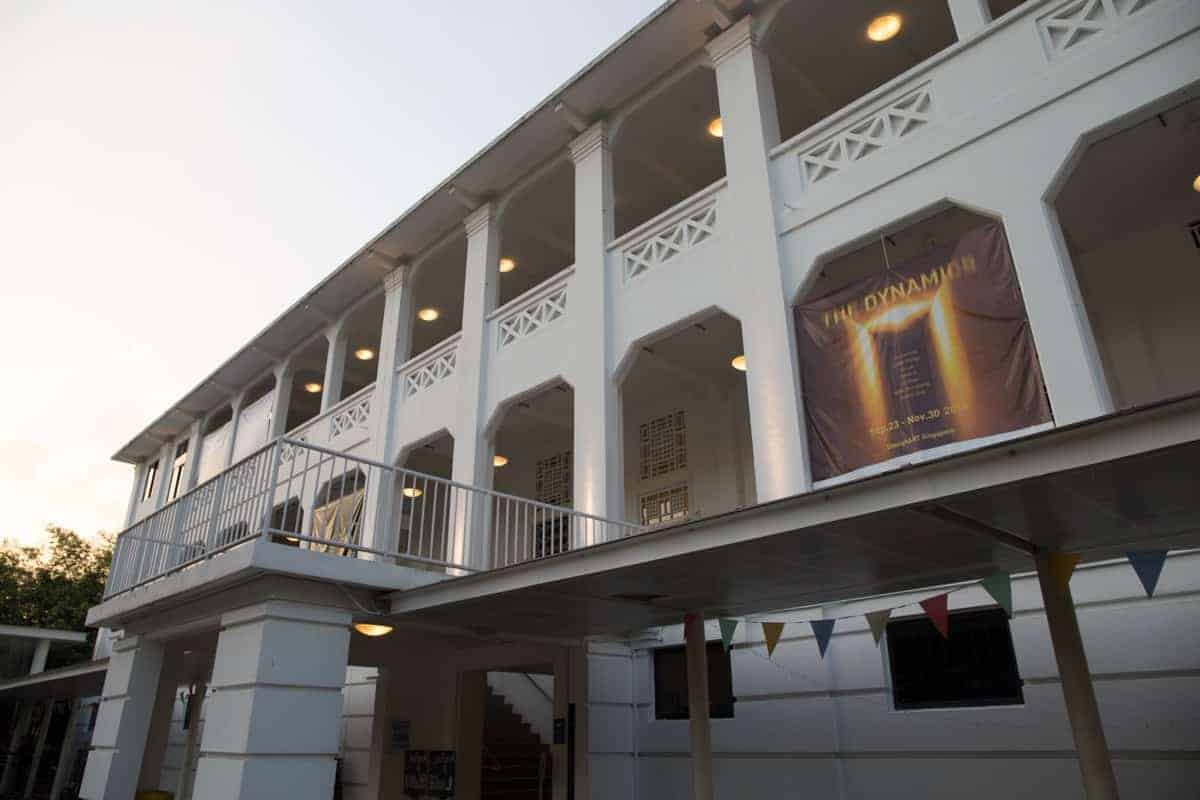
As a mature art school student prepping for essays and trying to get through the term, this gig seems like a perfect fit for me. We’re always being told to get off our bums and get out there into the galleries and the art world, to dive headlong into it and be consumed by the experiences of the things we have studied and read about.
Lovely sentiments, but I’m told for that for this gallery – sitting job, I’ll be expected to sit pretty, make sure no one damages or steals the art, and to deal with basic enquiries on purchases. Less of a deep dive then, than a shallow paddle in a lap pool. Nonetheless, my spirits are up, as I’m envisioning lots of downtime, in which I can sit quietly with my laptop amidst some gorgeous art while popping up every now and then to deal with the odd question.
While it’s also not part of the job scope to introduce the art to visitors or to offer any kind of tour, I am an eager beaver, excited to learn. I’ve therefore taken it upon myself to prepare a sheaf of notes and brief comments on the works and artists. I don’t want to seem too intrusive, so when people enter the gallery, I say a polite hello and tell them that if they want an introduction, I’d be happy to talk them through the art.
The first thing I notice however is that Gillman Barracks on a weekday is just quiet. I can’t get my head around this – it’s a large leafy green space (so rare in Singapore), full of history and beautiful buildings, fairly centrally located and amazingly offers both ample parking space and access to public transport.

Crowds throng Gillman during Art After Dark, but on weekdays, foot traffic seems minimal. Perhaps people are at work and the general gallery closing time of 7 pm on weekdays is unhelpful? But what about the students, or people who don’t work, or those on flexible time – where are they?
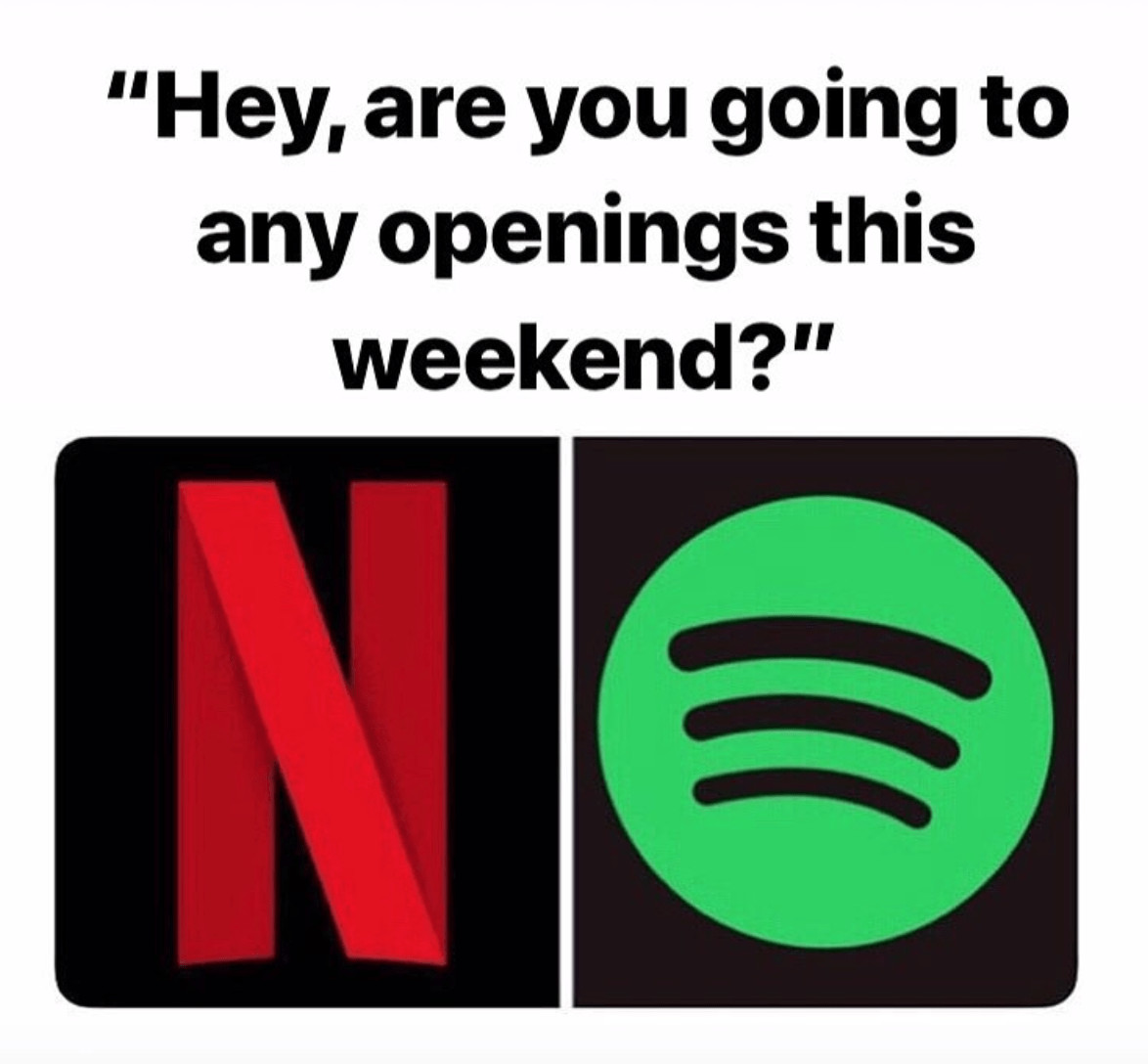
As expected, most of the time passes rather quietly and uneventfully.
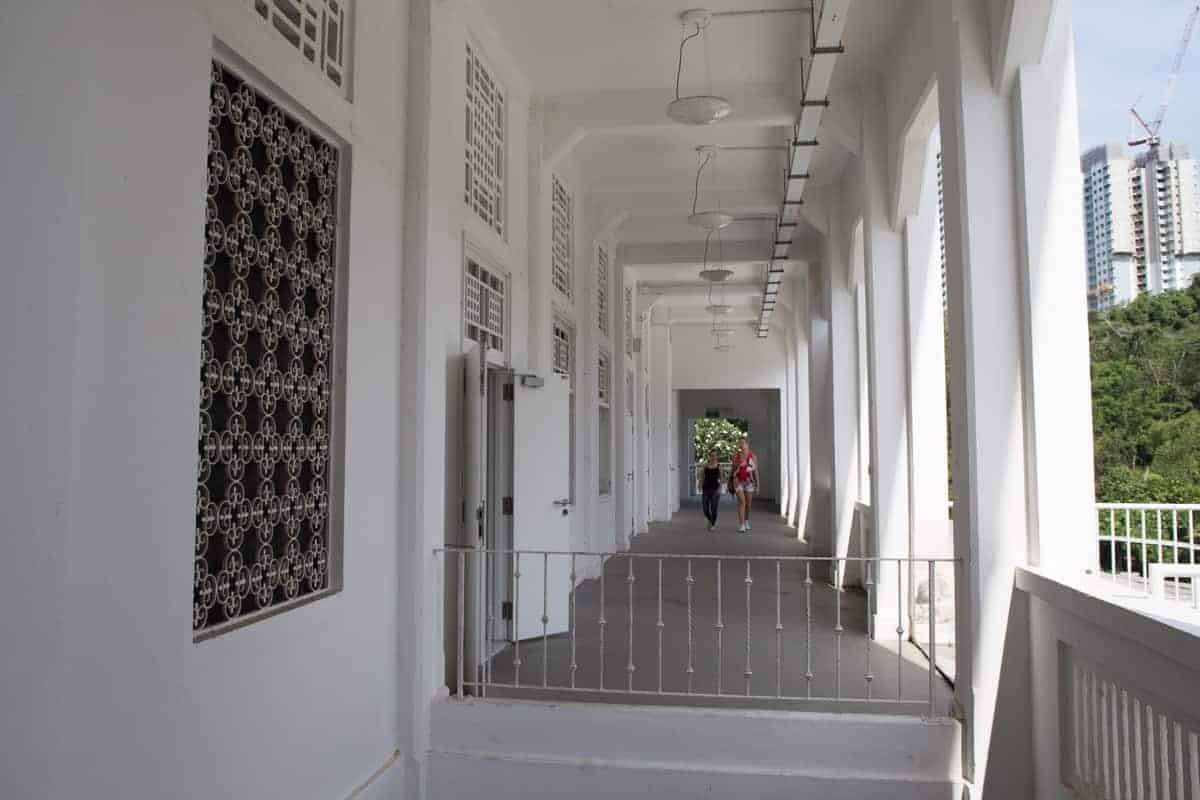
I decide quickly that my favourite gallery visitors are couples on dates. They’re smiley, on their best behaviour, and generally inclined to feign a polite interest in the art at hand. Perhaps they are pretending in order to seem cultured?
Whatever it is, I appreciate the politeness.
I see some casual walk-ins, most of whom ignore my cheerful hellos. Some simply nod curtly. A handful take up my offer for an explanation about the works, but it’s quite uneventful all round and I am for the most part, invisible. I wonder where the kooks are, the difficult folks – are all art lovers this tame?
As it turns out, I don’t have to wait long for the weirdos to surface.
One afternoon, a beautifully upholstered lady with a small dog on a leash walks into the gallery, taking a turn about the aisles with her furry friend accompanying her. I am alarmed – what’s the policy here on pets? I should have checked, but didn’t and now no one is here to confirm the position. I decide to err on the side of caution and politely ask her to leave her dog outside. My reward is an imperious glance down her nose as she loftily replies, “I’m the gallerist’s friend, I know her very well, it’s fine.”
I am confused.
What does being the gallerist’s friend have to do with whether animals can be brought into the gallery? Does the title of “Friend” allow one to run amok with all manner of small beasts?
The gallerist isn’t here, so how do I know that she’s telling me the truth? After a few moments of sweaty-palmed indecision, I decide to allow her to proceed – if she is, in fact, a friend and collector, I don’t want any perceived rudeness to drive her and a potential sale away. I’m told that collectors can be notoriously difficult to please and that one misstep can result in grudges being held for months, or even years. Instead, I decide to compromise by tailing her at a respectable distance, praying that the damn dog doesn’t pee (or worse!) on or near any of the expensive art.
Thankfully, the dog and woman don’t seem to have a great deal of interest in the exhibition and make their exit after a short period of time. I’ve only time to sag in my chair in relief for about five minutes, before a gaggle of sweaty teenagers bursts through the door. They look about twelve, but of course, I get up and ask politely about whether they’d like some information about the art.
The most aggressive one of the lot juts her chin out at me and pronounces, “Yes, you may inform us about this show.”
A million less-than-polite retorts spring to mind, but I rein them in. Perhaps I am being sensitive. As I start my show-and-tell session, I am interrupted by the group, challenging me at various junctures about statements I have made. I’m happy to take them on, and part of me feels relief that at least some people have strong feelings about the art here, but the questioning takes on a decidedly more rude tone after a time. At one point, the kids form a circle around me, questions ripping forth from each one like gunshots. I feel like I’m in A Clockwork Orange. After what feels like an eternity, it ends and the students mercifully go on their way, but not before the aggressive one sniffs, “I totally disagree with you and I don’t like this artist at all.”
Ok then.
Some kids from the same school, who later find their way into the gallery tell me that they’ve actually been tasked to work on an assignment about an artwork or art show that they didn’t like. I come to understand that I’ve just done someone’s homework for them – which is fine – and kudos to them for taking the initiative to engage the gallery sitter. Still, I can’t help but wonder whether their curtness and abrupt tone were totally necessary?
Ultimately, my gallery – sitting experience turns out to have a happy ending. One day, a kind- looking foreign gentleman walks in with a little Leica, and we strike up a conversation. He’s a photographic artist, but his isn’t a name that I’m familiar with. He hasn’t travelled to Singapore in a while and so I end up writing down some suggestions on art venues that he might like to visit on this trip. He snaps a couple of pictures of me for fun, which he then emails over, together with a lovely little thank-you note.
Fast forward a couple of years and our paths cross again, except that this time, it’s in Thailand, and this time, I find myself standing under his work at the Bangkok Art and Culture Centre during the inaugural Bangkok Art Biennale!
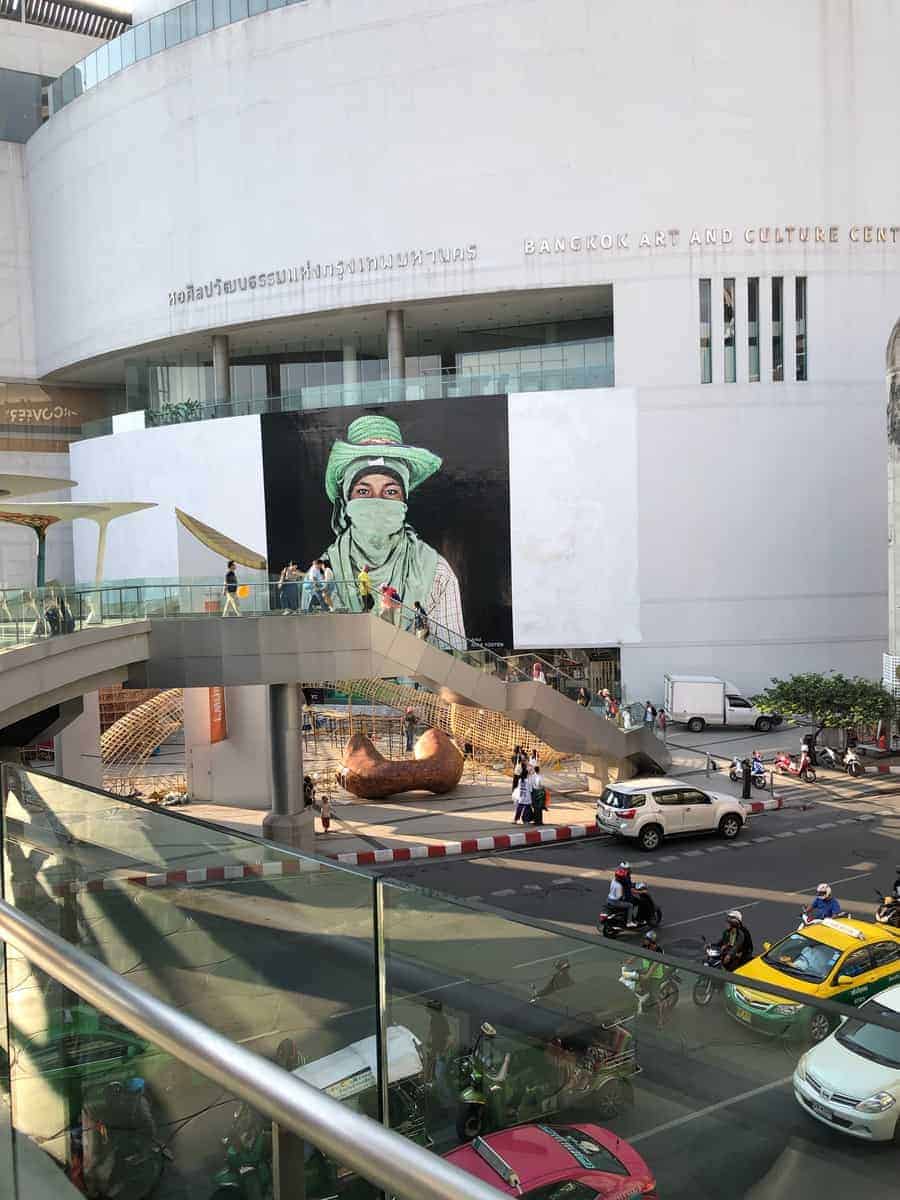
Would I recommend the gallery – sitting experience? Absolutely. It was an exercise in humility and a masterclass in how to be an effective all-around service provider. It also gave me great insight into the psyche of the Singaporean art-going public.
All I’ll say is — beware of the aggressive animals out there (also, the small dogs).






